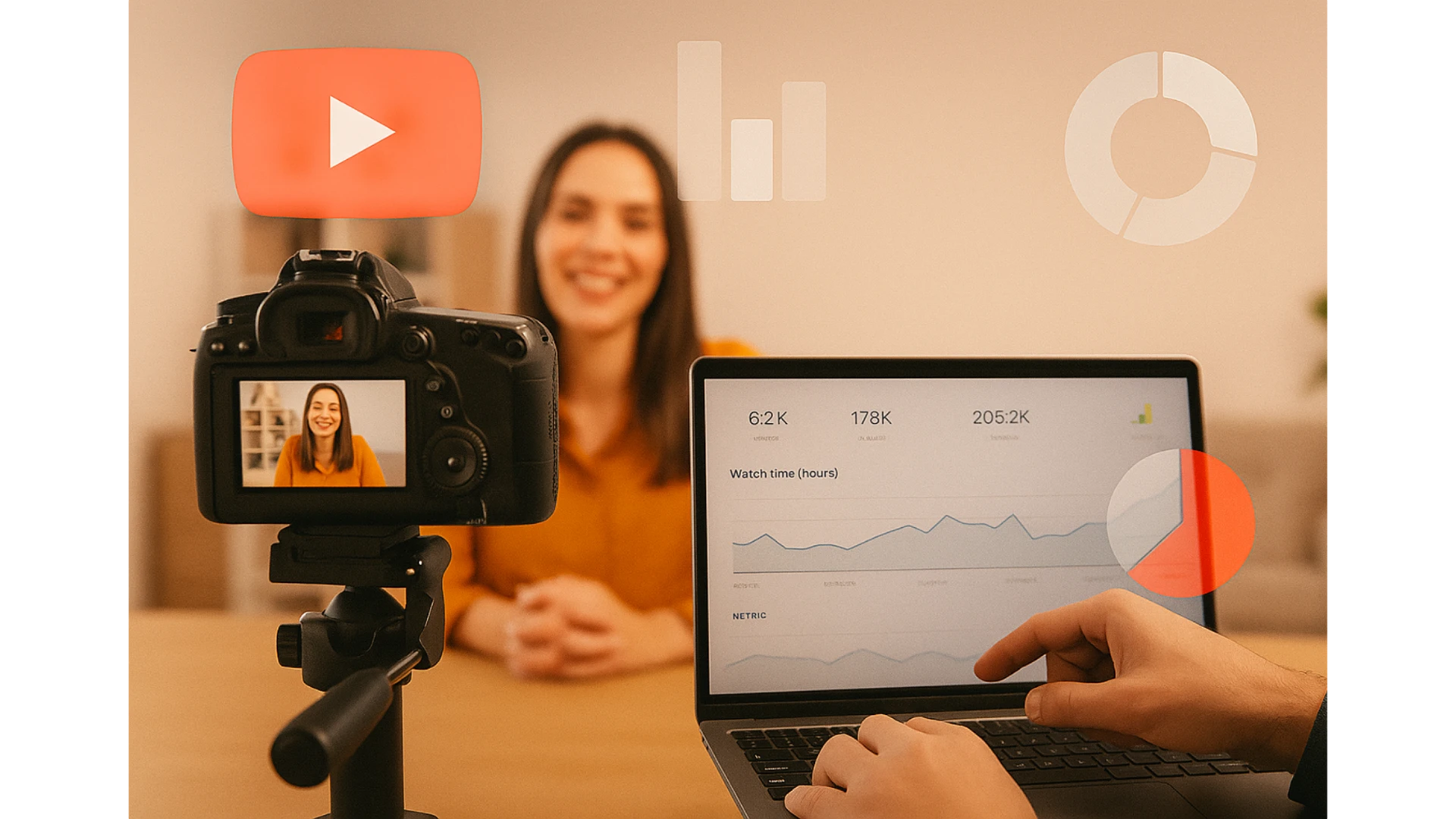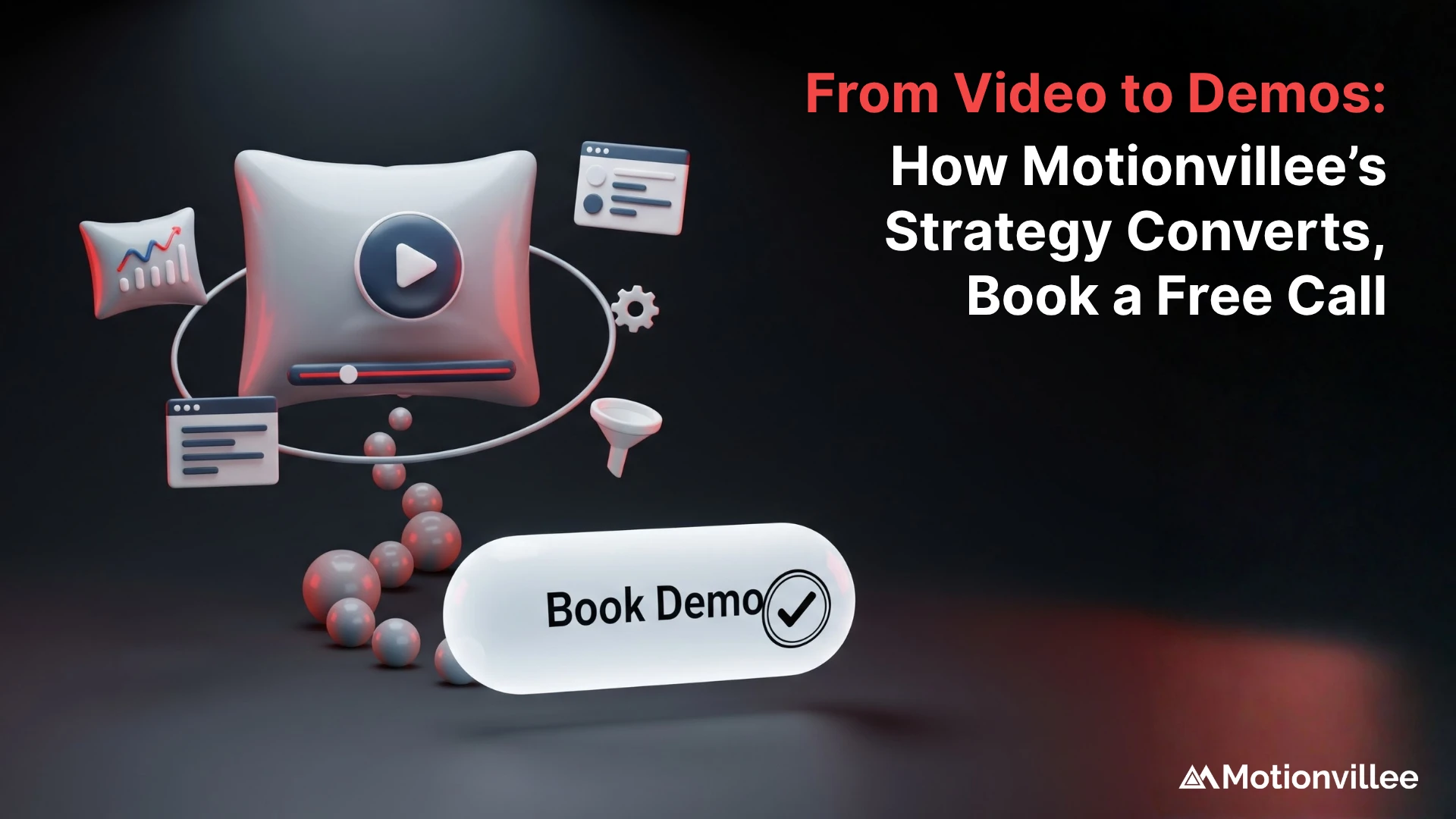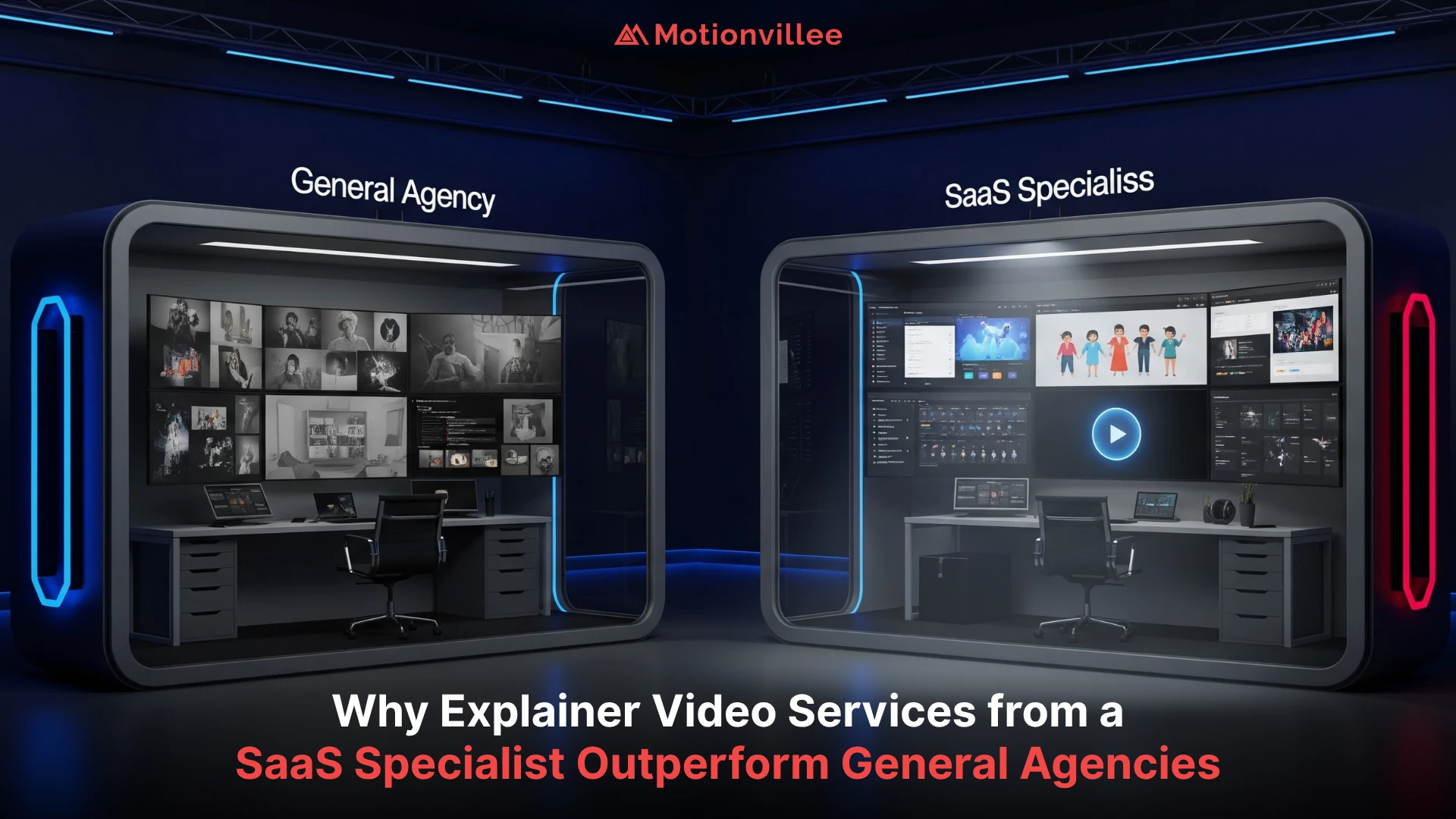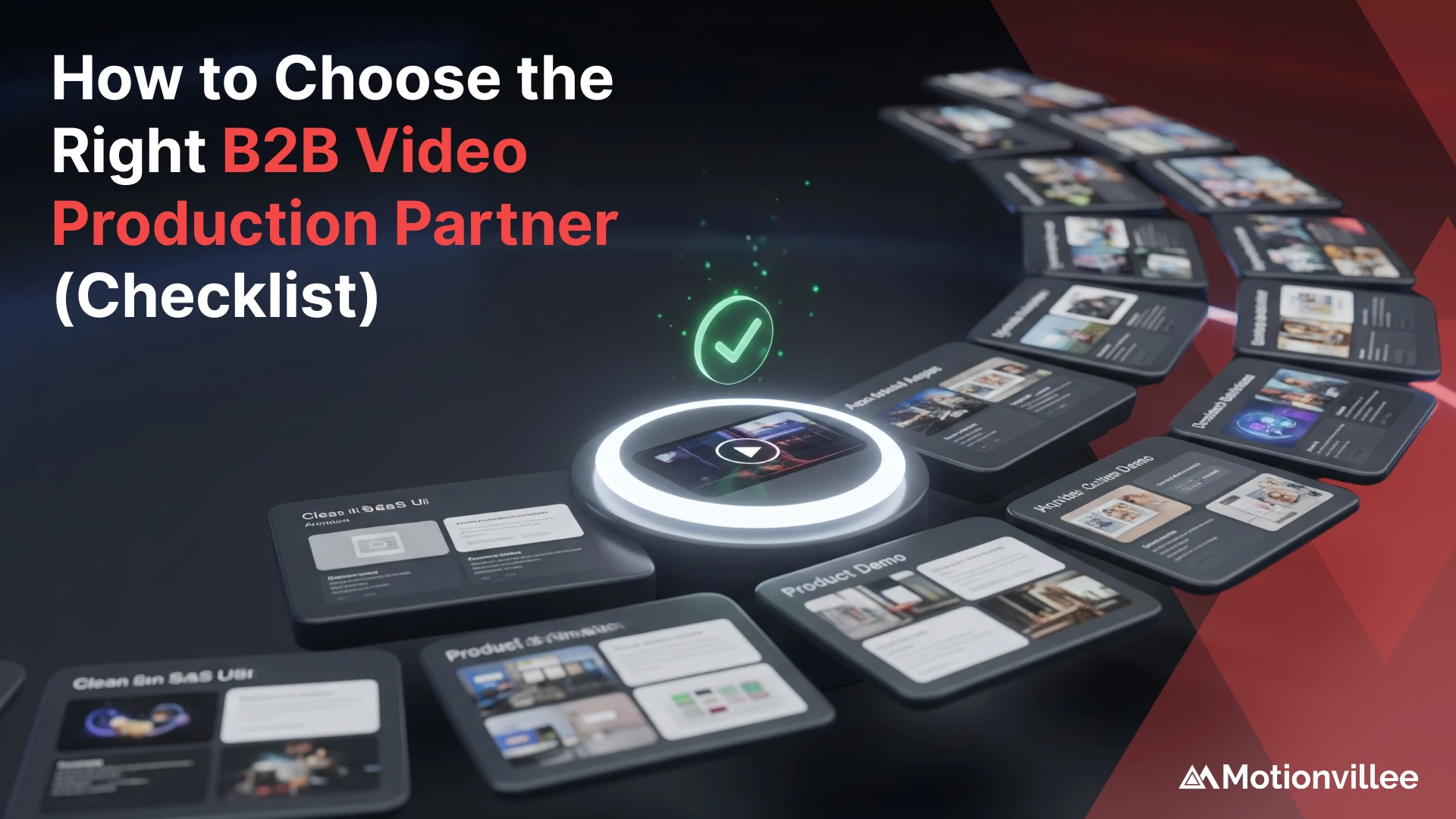When it comes to b2b video marketing trends 2025, staying current is essential for cutting through the noise. As a leading b2b video agency, Motionvillee knows that adapting to new formats and platforms drives both visibility and engagement.
Here’s why these trends matter:
- Audience demand: Buyers seek interactive, on-demand content rather than static presentations
- Platform evolution: Features like chapters, playlists, and short clips shape how prospects discover and consume video
- Competitive advantage: Early adopters set the standard and capture more qualified leads
In this post, you will learn ten key trends that will define B2B video strategy in 2025. Each trend is paired with practical tips to help you implement quickly and effectively.
Trend 1: Short-Form LinkedIn & YouTube Clips
Short-form clips are redefining b2b video marketing trends. What once felt too casual for enterprise now delivers quick impact. Prospects scroll through feeds quickly, so your message must land in under 60 seconds.
This format works especially well for b2b brand videos because you can spotlight a single feature, insight, or customer pain point without overwhelming viewers.
Quick tips for script, framing, and captions
- Script tightly: Focus on one idea or call to action per clip
- Hook in the first three seconds: Ask a question or state a surprising fact
- Frame for mobile: Center your subject and leave room at top and bottom for captions
- Use clear captions: Assume sound is off and keep text under 10 words per line
- Keep branding subtle: Add a small logo or consistent color accent, not a full intro
Publish these clips natively on LinkedIn and YouTube Shorts to tap into native distribution and algorithmic support. Track key metrics like view completion rate and click-through to your site.
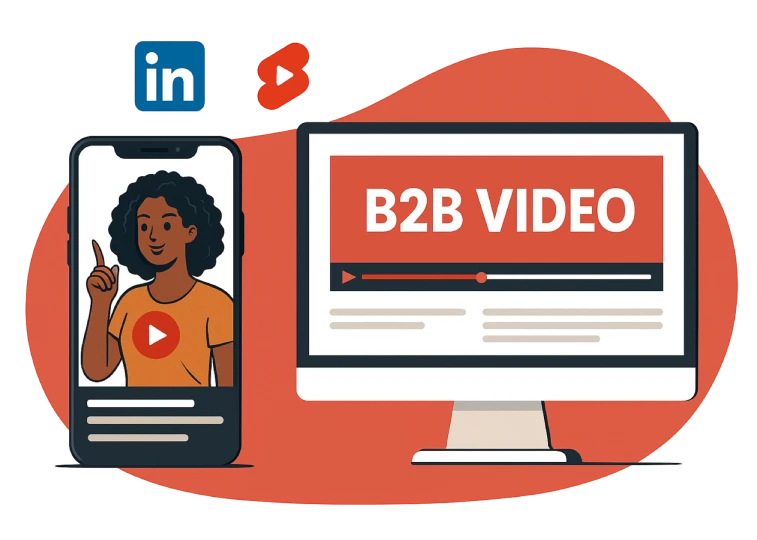
Trend 2: Interactive Video Features
Interactive elements are among the top b2b video marketing trends for 2025. Embedding quizzes, calls to action, and clickable overlays turns passive viewers into active participants. These features guide prospects through your message and deliver instant feedback.
Use in-video quizzes and CTAs when you want to:
- Qualify leads: Ask a quick question midway to segment your audience
- Drive action: Link directly to a signup form or demo request
- Gather insights: Learn what topics resonate by tracking quiz answers
Overlays and clickable hotspots work best for b2b animated videos that explain complex workflows. You can:
- Highlight key features with pop-up text or icons
- Link to related resources without interrupting playback
- Offer downloadable assets, such as whitepapers or case studies
These interactive features increase engagement by up to 40 percent, according to industry data. They keep prospects watching longer and signal strong interest to sales teams.
Trend 3: Personalized Video at Scale
Personalization is no longer limited to one-off clips. With data-driven templates, you can create dozens of custom messages without multiplying work. A b2b explainer video platform that supports dynamic fields lets you swap in names, company logos, or product details on the fly.
Key tactics for dynamic personalization:
- Data-driven intros: Pull prospect names or job titles into the opening line
- Custom graphics: Use automated overlays that show the lead’s industry or product module
- Conditional scenes: Branch to different sections based on viewer industry or pain point
To balance personalization with efficiency:
- Template libraries: Build a core library of scene templates and approved assets
- Batch recording: Film universal segments in one session, then automate merges
- Platform automation: Leverage tools that import CRM data and generate final videos
This approach delivers a personal touch without blowing up timelines or budgets. Prospects feel seen, and you maintain control over quality and brand standards.
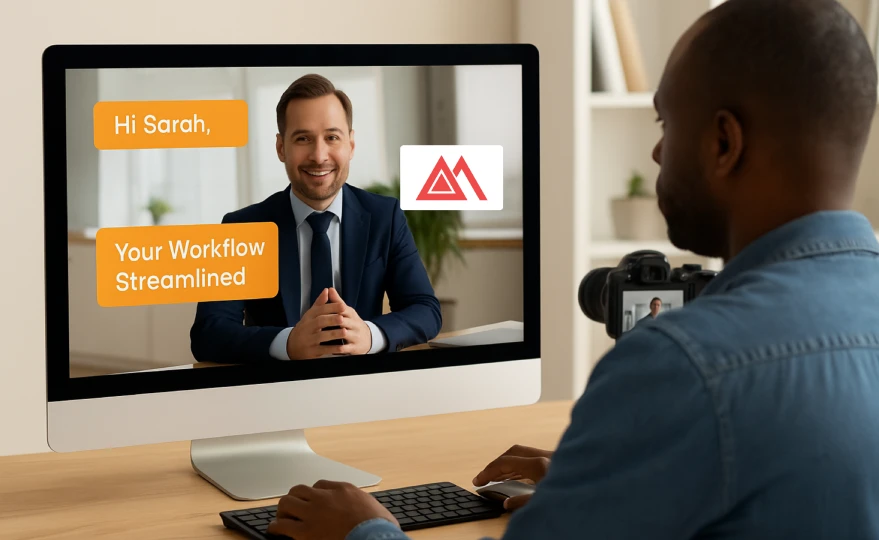
Trend 4: Live & Hybrid Experiences
Live and hybrid events connect your brand with audiences in real time. Whether you host a fully virtual webinar or a mixed in-person meeting with an online stream, clear production and engagement planning are key.
Best practices for real-time demos and Q&A
- Plan a clear agenda: Share screen, demo key features, then open the floor for questions
- Test your setup: Verify camera angles, audio levels, and lighting before you go live
- Encourage participation: Use polls, chat prompts, and live Q&A tools to keep viewers involved
- Record for later: Edit and share the session as on-demand content
Bridging in-person and virtual audiences
- Dual-stream quality: Use multi-camera setups or professional services similar to video production for small businesses to ensure smooth transitions
- On-site support: Assign a moderator to manage live and online questions in parallel
- Consistent branding: Display the same slide deck, lower thirds, and title cards for both audiences
- Follow-up assets: Send recordings, slide decks, and summaries to all attendees
By mastering live and hybrid formats, you create memorable experiences that drive trust and accelerate decision making. Next, we’ll dive into Trend 5: AI-assisted editing workflows.
Trend 5: AI-Assisted Editing
AI-assisted editing tools are accelerating production without sacrificing quality. By automating routine tasks you free up your team to focus on creative direction and strategy. This trend helps teams produce content on par with the best saas explainer videos in a fraction of the time.
Key AI-driven editing features:
- Automated cuts that remove silences or mistakes and tighten pacing
- Instant caption generation with high accuracy for multiple languages
- AI voiceovers that match your brand tone without studio recording
To maintain quality at speed follow these steps:
- Review AI-generated cuts and adjust pacing or transitions as needed
- Edit captions for clarity, correcting any misheard words or context errors
- Fine-tune AI voice tracks by adjusting intonation and emphasis in key sections
- Maintain brand consistency by applying your color grades and logo overlays after automation
Pair AI workflows with human oversight to ensure every video meets your standards. This balance lets you scale production and keep content fresh, without growing head count.
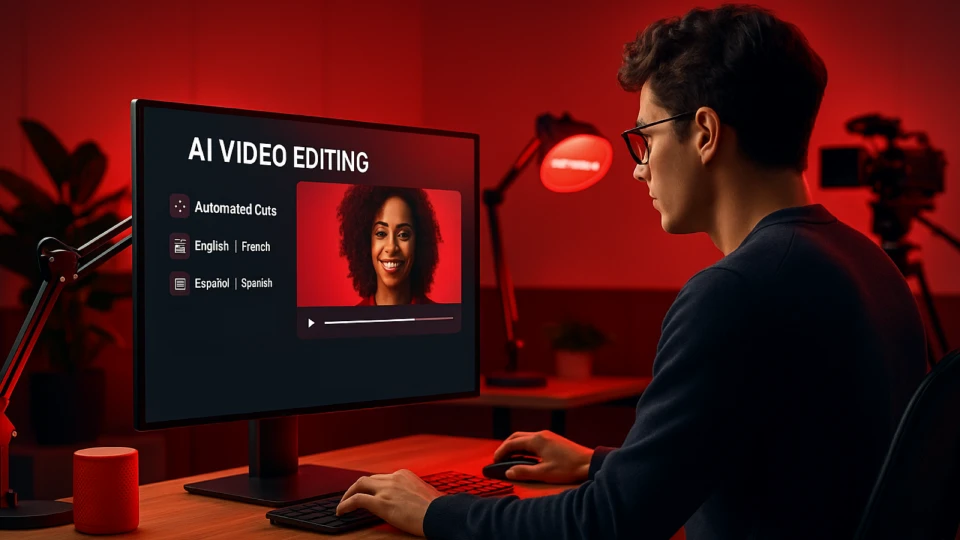
Trend 6: Immersive & 360° Content
Immersive formats like AR and 360° videos let prospects explore products in a virtual environment. This approach works best when you need to demonstrate complex features or training scenarios that benefit from hands-on interaction.
When to deploy AR/VR formats
- Complex products: Show internal components or workflows that are hard to capture on camera
- Remote demos: Let remote teams inspect virtual prototypes as if they were in the room
- Safety training: Simulate high-risk scenarios without real-world hazards
Use cases in product tours and training
- Interactive walkthroughs: Allow viewers to click hotspots for more detail on a machine or interface
- Guided simulations: Overlay instructions on a real environment to show step-by-step procedures
- Immersive storyboards: Combine narrative and 360° footage for an engaging brand experience
These formats enhance a saas product explainer by giving users control over their view and the ability to focus on the details that matter. Rather than passively watch a video, prospects engage directly with your solution, building deeper understanding and trust.
Trend 7: Video SEO Essentials
Video SEO forms the backbone of every trend’s success. Without proper optimization, even the best content will remain hidden from your audience. Focusing on captions, transcripts, sitemaps, and chapters ensures search engines and viewers find your videos easily.
Core elements to implement:
- Captions and Transcripts: Upload accurate closed captions and provide a full transcript on the page. This makes your content searchable and accessible to all viewers.
- Video Sitemaps: Create and submit a dedicated sitemap XML listing each video URL, title, description, and thumbnail. This tells search engines exactly where to find your videos.
- Chapters and Timestamps: Break longer videos into labeled segments. Use clear, keyword-rich labels so users and bots can jump to relevant sections.
- Structured Data (JSON-LD): Add a VideoObject schema block with required fields like name, description, thumbnailUrl, and uploadDate. Test your markup in Google’s Rich Results tool.
Why it matters
- Higher rankings in both web and video search results
- Increased watch time as viewers find exactly what they need
- Better accessibility for viewers who rely on captions or transcripts
- Stronger signals to algorithms that your content is valuable
Integrating these SEO essentials keeps your videos front and center and magnifies the impact of every trend you adopt. Next we will explore omnichannel distribution strategies that expand your reach beyond a single platform.
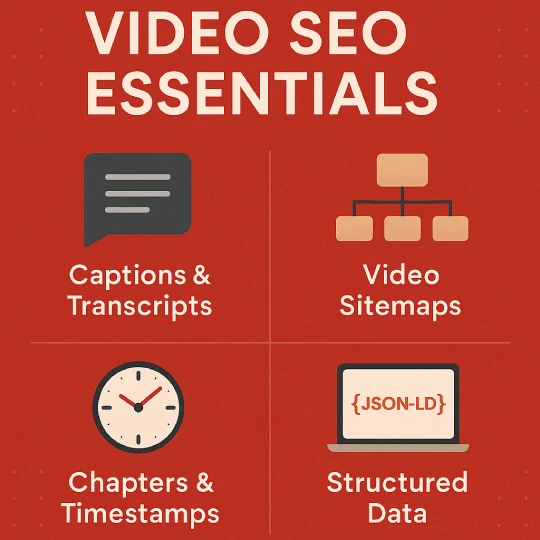
Trend 8: Omnichannel Distribution
Omnichannel distribution ensures your videos reach prospects wherever they are. By embedding content in email, chat, and microsites, you create a seamless experience that keeps your brand top of mind.
Best practices:
- Email campaigns: Place short video previews above the fold with a clear play button and link to the full clip
- Chatbots and live chat: Offer quick demo snippets in response to common questions, reducing friction in the sales conversation
- Microsites and landing pages: Feature hero videos with context text and calls to action, making it easy for visitors to engage
For maximum reach, sequence your distribution thoughtfully:
- Phase 1 – Awareness: Share teaser clips in email newsletters and social feeds to spark interest
- Phase 2 – Engagement: Follow up with full-length explainers on microsites and chat widgets for deeper exploration
- Phase 3 – Conversion: Send personalized video messages or proposal walkthroughs to qualified leads
By coordinating your channels, you guide prospects from discovery through decision without forcing extra steps. This unified approach amplifies each trend’s impact and drives consistent, measurable results.
Trend 9: Data-Driven Optimization
Measuring performance is essential for refining your video strategy. As a b2b video agency, you need more than view counts, you need detailed insights that show what works and where to improve.
Key analytics tools and metrics:
- Heatmaps: Visualize where viewers click or pause to identify engaging scenes
- Engagement Scoring: Combine watch time, completion rate, and interactions into a single performance metric
- Attribution Models: Track how videos contribute to conversions across touchpoints
Turn analytics into action with these steps:
- Set clear goals: Define whether you want to increase awareness, engagement, or conversions
- Gather data weekly: Pull reports on key metrics so you spot trends early
- A/B test variations: Experiment with different intros, lengths, or formats and compare results
- Optimize distribution: Shift budget or placement toward channels that drive the best ROI
- Iterate continuously: Use insights to update scripts, visuals, or CTAs in future videos
By combining heatmaps, engagement scoring, and attribution you see the full journey from view to action. This data-driven loop ensures every video you produce gets smarter, more targeted, and better aligned with your business objectives.
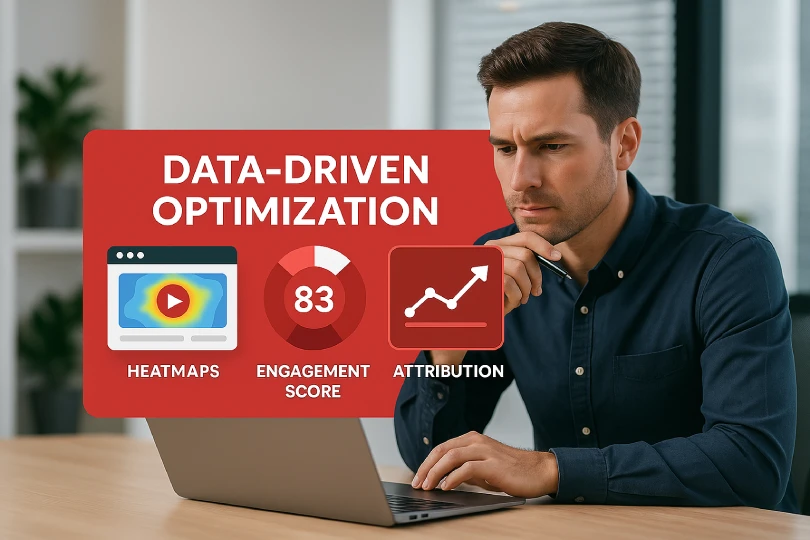
Trend 10: Accessibility & Inclusion
Making videos accessible widens your audience and meets legal requirements. Captions, audio descriptions, and mobile-first layouts ensure every prospect can engage with your content.
Key accessibility features:
- Captions: Provide accurate, synced text so viewers can follow without sound
- Audio Descriptions: Describe visuals for blind or low-vision users, using a clear, narrated track
- Mobile First Layouts: Design players and controls for small screens, with large buttons and responsive sizing
Why it matters for B2B brands:
- Legal compliance: Many regions require accessible digital content under laws like the ADA or EU Web Accessibility Directive
- Better user experience: Captions help non-native speakers, and clear layouts improve engagement on the go
- Broader reach: Accessible content ranks higher in search results and attracts a more diverse audience
Implementation tips:
- Test captions and descriptions with real users or accessibility tools
- Use accessible colors and high contrast for all text and graphics
- Ensure keyboard navigation works for play, pause, and volume controls
- Include accessibility statements and controls on your video page
By prioritizing inclusion, you not only protect your brand but also build trust with every viewer. These practices are the final piece in a robust B2B video marketing strategy for 2025.
Bringing It All Together
You now have ten trends to guide your B2B video strategy in 2025. Use this roadmap to decide which formats to adopt first and how to layer tactics over time:
- Start with Short-Form Clips: Launch quick LinkedIn and YouTube Shorts to build awareness
- Add Interactive Elements: Integrate quizzes or overlays into top-performing videos
- Scale Personalization: Roll out data-driven templates for targeted outreach
- Plan Live Events: Schedule a hybrid demo or webinar to deepen engagement
- Automate Editing: Implement AI tools for faster turnaround on routine tasks
- Test Immersive Formats: Pilot a 360° tour or AR demo for your flagship product
- Optimize for Search: Ensure captions, sitemaps, and structured data are in place
- Distribute Widely: Embed videos in email, chat, and microsites for seamless reach
- Measure Closely: Use heatmaps and engagement scores to refine your approach
- Make It Accessible: Add captions, audio descriptions, and mobile layouts
Each step builds on the last, creating a cohesive, user-focused video ecosystem. Ready to put this plan into action? Get in Touch to explore how Motionvillee can help you implement these trends and achieve measurable results.


